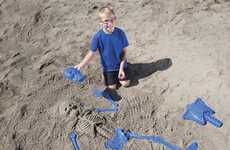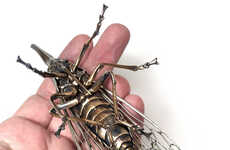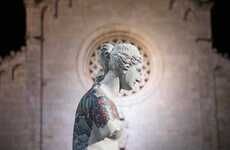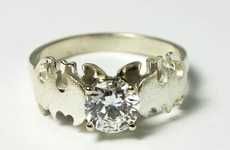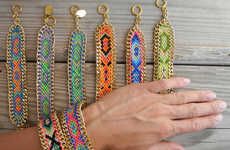
These Incredible Jeweled Skeletons are Historic Pieces from Rome
Sarah Dos Santos — September 11, 2013 — Fashion
References: dailymail & sobadsogood
Paul Koudounaris wrote a book that observes the history of ’ The Catacomb Saints’ and features incredible photographs of jeweled skeletons from Rome.
The book, ‘Heavenly Bodies: Cult Treasures and Spectacular Saints from the Catacombs’, tells of the fascinating discovery in 1578 of a series of tombs under Roman streets where decayed skeletons—assumed to be the remains of early Christian martyrs—were found. The skeletons, which were originally named ‘The Catacomb Saints,’ were shipped to Europe and were clothed and adorned in precious jewels, crowns, armor, clothing and wigs. After being dressed, they were displayed in various churches to replace relics destroyed in the Reformation and to remind faithful-for-life Catholics of the riches and wealth that awaited them after death.
Some of these skeletons took five years to decorate! That’s a lot of time spent around the dead. From the photographs, you can tell the skeletons are intricate, beautiful and took a great deal of work.
The book, ‘Heavenly Bodies: Cult Treasures and Spectacular Saints from the Catacombs’, tells of the fascinating discovery in 1578 of a series of tombs under Roman streets where decayed skeletons—assumed to be the remains of early Christian martyrs—were found. The skeletons, which were originally named ‘The Catacomb Saints,’ were shipped to Europe and were clothed and adorned in precious jewels, crowns, armor, clothing and wigs. After being dressed, they were displayed in various churches to replace relics destroyed in the Reformation and to remind faithful-for-life Catholics of the riches and wealth that awaited them after death.
Some of these skeletons took five years to decorate! That’s a lot of time spent around the dead. From the photographs, you can tell the skeletons are intricate, beautiful and took a great deal of work.
Trend Themes
1. Jeweled Skeletons - The use of jewels and precious metals in fashioning skeletons creates an opportunity for jewelry and art industries to explore alternative and unconventional materials.
2. Religious Relics - The display of well-crafted and adorned remains in churches offers an opportunity for religious institutions to capitalize on the ornate and historical aspects of their beliefs and traditions.
3. Historical Preservation - The discovery and display of these ancient bejeweled skeletons highlight the need for cultural and historical preservation in the tourism and museum industries.
Industry Implications
1. Jewelry - Jewelers and artisans can explore the use of skeletons as a unique canvas for their craft.
2. Religion - Religious institutions can use these adorned skeletons as a display of religious symbolism.
3. Tourism/museums - Creating exhibits and highlighting cultural and historical artifacts can increase interest in preservation efforts and attract tourism.
6.1
Score
Popularity
Activity
Freshness


